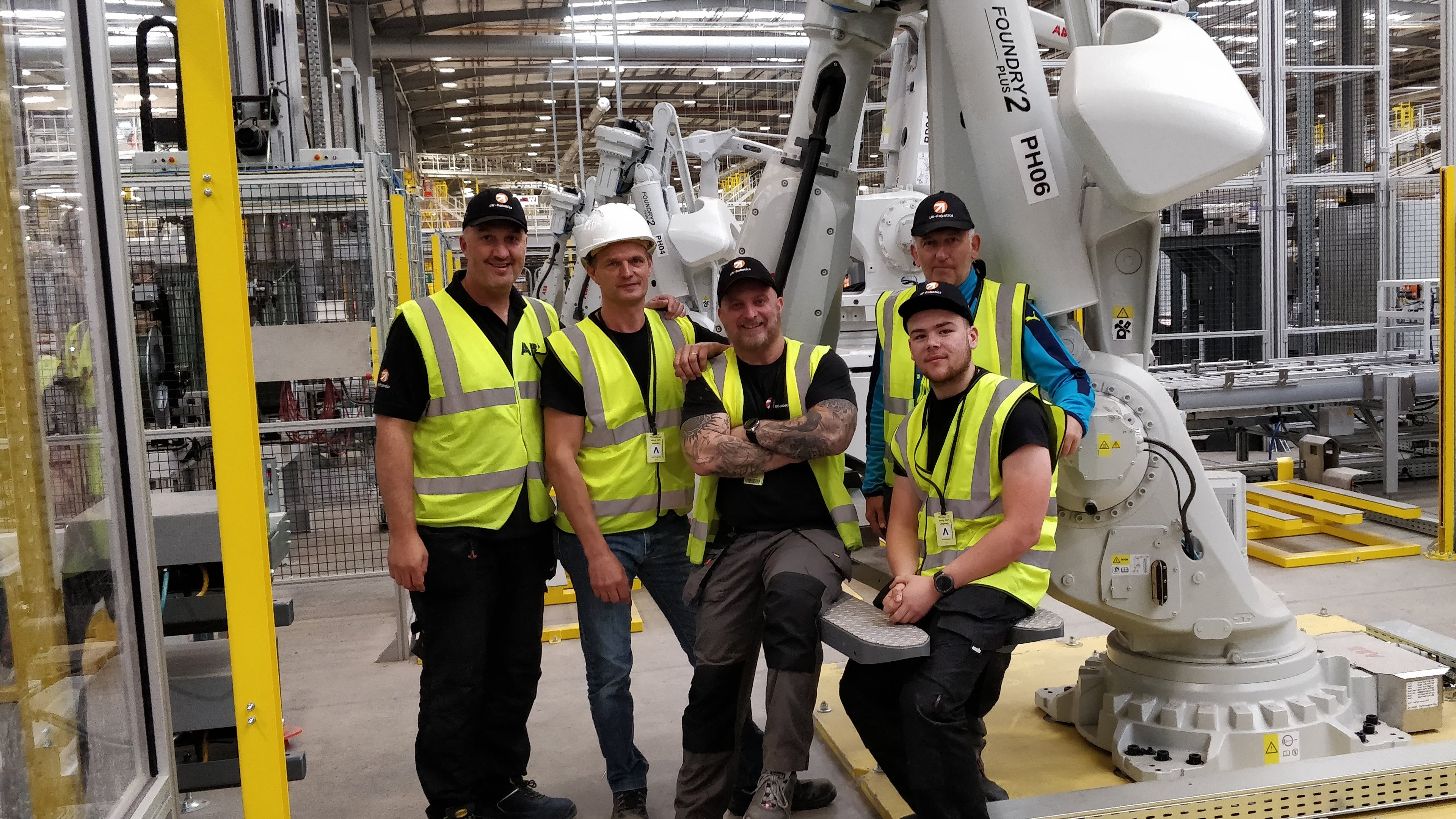Background
Project Inspiration
Amazon Work Experience
My motivation to pursue a career as a Software Engineer was driven by a desire to solve real-world problems through technology. When it came time to choose a topic for my final year project, I reflected on an earlier experience, shortly before starting my degree, when I spent three months working as a Robotics Engineer on a work placement. That opportunity gave me first-hand insight into how software and automation can work together to address complex logistical challenges, and it ultimately inspired the direction of my project.

As part of the team, I helped commission and program a state-of-the-art ABB palletising system within one of Amazon's fulfilment centres. The process began with loading tote boxes from a conveyor onto pallets, stacking them until they were full. Once full, a robot equipped with a fork tool would move the pallet onto a shelf that served as a buffer. When space became available, the robot would then transfer the filled pallet from the shelf into a bundler, where it was packaged and stamped with a delivery label for onward shipment.
This work experience was fantastic, and the role of robotics in modern manufacturing is remarkable. Beyond the physical machines, I became increasingly fascinated by the intricate systems and algorithms that orchestrate such operations.
Last-Mile Delivery
Watching hundreds of tote boxes stream past, each destined for a different customer, I began to wonder about the decision-making processes behind the scenes: How is it determined which distribution centre should dispatch a product? Which depot is best suited for its delivery? And, crucially, which vehicle should handle the task, and in what sequence should its stops be arranged to ensure the most efficient route?
These questions naturally drew my attention to one of the most complex and impactful stages of the supply chain: last-mile delivery. This is the critical final step, where a product travels from its penultimate location to its ultimate destination, the customer. It is a stage rich with computer science challenges, from route optimisation to real-time scheduling, and it is often the most costly and time-sensitive part of the delivery process.
Recognising its importance, I was inspired to focus my project on exploring the systems and algorithms that power these last-mile operations, with the goal of understanding how they can be made more efficient.
A Vehicle Routing System
After choosing my project’s topic, it was time to consider my approach from a software engineering perspective. I wanted to understand not only the logistical theory but also how to design and implement a system capable of solving such a complex problem in practice. As my final year at university approached, I saw the Honours project as the perfect opportunity to bring these interests together and build software that could address a real-world optimisation challenge.
The goal was to create a full-stack system: a user-friendly interface for entering delivery and vehicle data, a relational database to store and manage that information, and a back-end engine capable of processing it to produce optimised delivery routes.
Within the broader field of logistics planning, the Vehicle Routing Problem (VRP) stood out as an ideal focus. It is a classic, well-studied problem that underpins many of the operations I had observed at Amazon, yet it remains computationally challenging and rich with opportunities for algorithmic innovation. The combination of its practical relevance, algorithmic complexity, and the need for robust software design made it the perfect foundation for my project.